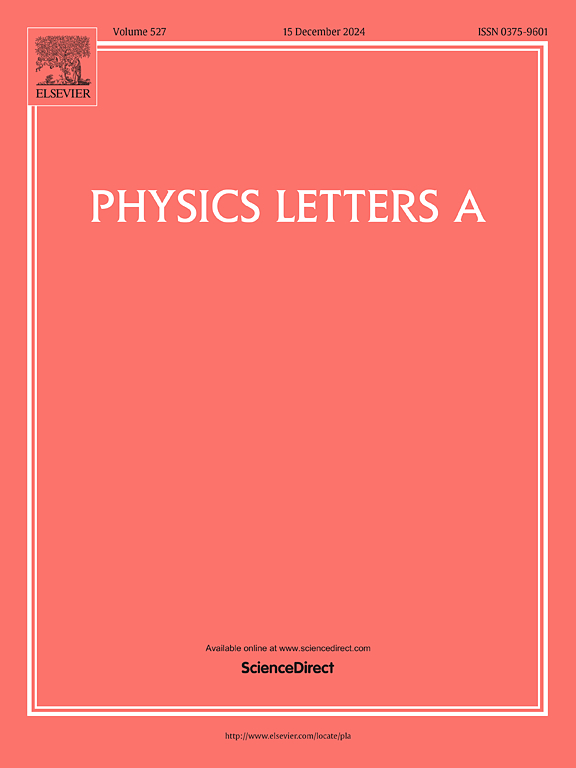在小尺度量子处理器上验证本征态热化假说
IF 2.6
3区 物理与天体物理
Q2 PHYSICS, MULTIDISCIPLINARY
引用次数: 0
摘要
本征态热化假说(ETH)是讨论孤立多体量子系统混沌动力学中热行为的一个框架。PXP模型,其中某些状态不热化,已经与Sachdev-Ye Kitaev (SYK)模型进行了比较,后者被认为是完全热化的。利用一种基于门的量子电路方法来模拟时间演化并计算无序相关器(OTOC),这是混沌程度的度量。考虑到在基于门的硬件上实现SYK的限制,对具有类似SYK的热行为的简化模型Spin-XY4 (syxy4)进行了测试。利用梯度上升脉冲工程(GRAPE)算法在模拟量子器件上优化控制,对SYK模型进行了仿真。PXP模型显示了非热态的存在。另一方面,SYK和syxy4模型在模拟器和量子处理器上进行的有限尺寸计算中显示出热化特征。本文章由计算机程序翻译,如有差异,请以英文原文为准。
Testing Eigenstate Thermalization Hypothesis on small-scale quantum processors
The Eigenstate Thermalization Hypothesis (ETH) is a framework for discussing thermal behavior originating from chaotic dynamics in isolated many-body quantum systems. The PXP model, where certain states do not thermalize, has been compared with the Sachdev-Ye Kitaev (SYK) model, which is believed to be fully thermalizing. A gate-based quantum circuit approach is utilized to simulate time evolution and compute the Out-of-Time-Ordered Correlator (OTOC), a measure of the extent of chaos. Considering restrictions on implementing SYK on gate-based hardware, a simplified model called Spin-XY4 (SXY4), which has thermal behavior similar to SYK, is tested. The SYK model is also simulated by optimizing control on an analog quantum device with the GRAPE (GRadient Ascent Pulse Engineering) algorithm. The PXP model demonstrates the presence of non-thermal states with scars. On the other hand, SYK and SXY4 models show characteristics of thermalization in finite-size computations performed on simulators and quantum processors.
求助全文
通过发布文献求助,成功后即可免费获取论文全文。
去求助
来源期刊

Physics Letters A
物理-物理:综合
CiteScore
5.10
自引率
3.80%
发文量
493
审稿时长
30 days
期刊介绍:
Physics Letters A offers an exciting publication outlet for novel and frontier physics. It encourages the submission of new research on: condensed matter physics, theoretical physics, nonlinear science, statistical physics, mathematical and computational physics, general and cross-disciplinary physics (including foundations), atomic, molecular and cluster physics, plasma and fluid physics, optical physics, biological physics and nanoscience. No articles on High Energy and Nuclear Physics are published in Physics Letters A. The journal''s high standard and wide dissemination ensures a broad readership amongst the physics community. Rapid publication times and flexible length restrictions give Physics Letters A the edge over other journals in the field.
 求助内容:
求助内容: 应助结果提醒方式:
应助结果提醒方式:


